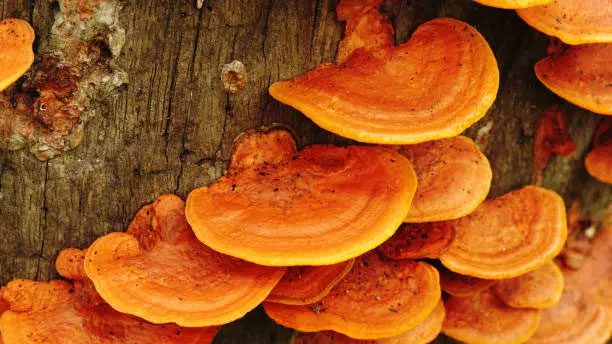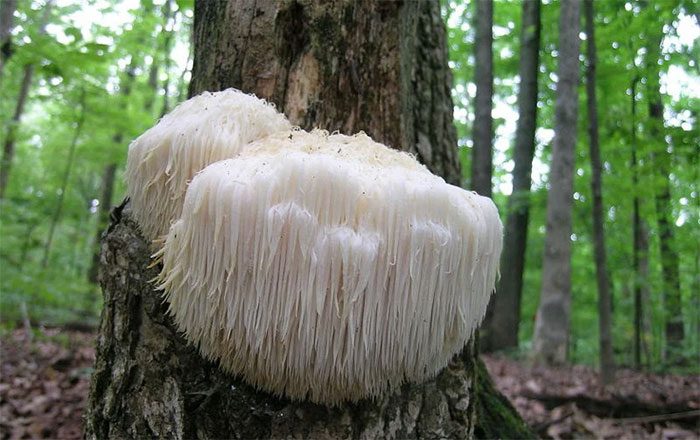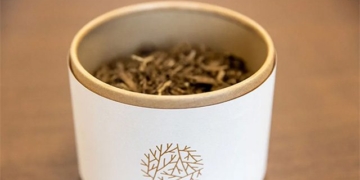Two Species Discovered for the First Time in Vietnam
According to Lam Dong newspaper, Bidoup – Nui Ba National Park, often referred to as the “roof of Indochina”, has long been famous for its rich and diverse ecosystem. Notably, among the various species in this national park, fungi play an extremely important role in ecological material balance and are a vast source of diversity for research, food, and medicinal resources.
In December 2022, a research team from the Lam Dong Department of Science and Technology, Dalat University, and the management board of Bidoup-Nui Ba National Park conducted surveys, collected samples, and identified many types of fungi.

The research team’s paths in Bidoup-Nui Ba National Park. (Photo: Vietnam Tropical Center).
The study results showed that a total of 52 edible mushroom species were identified, belonging to 63 genera and 16 different families. Notably, among these, two species were discovered for the first time in Vietnam: the chicken of the woods mushroom (Laetiporus caribensis) and the lion’s mane mushroom (Hericium erinaceum). Additionally, a rare species found in Vietnam, the beefsteak mushroom (Fistulina hepatica), was also discovered in the park.
Let’s learn more about these two species.
Chicken of the Woods Mushroom
According to Science, the chicken of the woods mushroom (Laetiporus caribensis) belongs to the genus Laetiporus, a group of edible fungi found worldwide. It is also known as chicken mushroom, wild chicken, or sulfur shelf, due to its flavor and texture, which is similar to chicken meat.
This mushroom has a width ranging from 5 to 25 cm and is composed of many small tubular threads (mycelium). It grows in large clusters, with some specimens weighing over 45 kg.

The species discovered for the first time in Vietnam is the chicken of the woods mushroom. (Photo: INaturalist).
When young, the chicken of the woods mushroom has a moist, flexible stalk that is yellowish sulfur or orange in color, sometimes bright orange. As it matures, it lightens in color, the stalk becomes brittle, and it has a slightly pungent taste, often with small holes from beetles or snails on the surface.
This mushroom is typically found on oak, eucalyptus, bald cypress, chestnut, willow, and some conifer trees. The chicken of the woods is a parasitic species and often causes brown rot in its host, which typically leads to the tree’s collapse.
They thrive most during late spring to early autumn.
The chicken of the woods mushroom can be prepared similarly to chicken meat. It can also be used as a substitute for chicken in vegetarian diets. Moreover, it can be frozen for long periods while remaining edible. In some regions of Germany and North America, it is considered a delicacy.
Lion’s Mane Mushroom
Lion’s mane mushroom (Hericium erinaceum) is an edible mushroom used for medicinal purposes, belonging to the Hericiaceae family.
In nature, lion’s mane mushrooms are found in North America (California), Europe (France, England, Germany, the Netherlands, Spain), and Asia (Japan, India, Borneo, Central Asia). They are typically found on decaying hardwood trees such as oak and beech. They are considered indicators of forest health; the more lion’s mane mushrooms present, the healthier the forest.
Young fruiting bodies are white to off-white, with white flesh, and as they mature, they turn yellow to deep yellow. The main spines range from 0.5 to 3 cm in length, and the surface of the spines has white cystidia that carry spherical spores, with a round droplet of cytoplasm at the center of the spores. Lion’s mane mushrooms are temperate fungi that can only be cultivated in cool climates, with optimal growth temperatures of 16-20 degrees Celsius, and a maximum cultivation temperature of 19-22 degrees Celsius. Currently, this mushroom is widely cultivated in China, Japan, and South Korea.

Lion’s mane mushrooms are typically found on decaying hardwood trees such as oak and beech. (Photo: Pixabay)
Lion’s mane mushrooms are rich in fiber and protein and low in fat, making them suitable for healthy or diet-conscious eating. Additionally, they contain many vitamins and amino acids beneficial for the body. This mushroom grows on both living and dead trees, typically sprouting in late summer and autumn.
Historically, traditional Chinese medicine has used lion’s mane mushrooms as a medicinal ingredient. The components within the mushroom have antioxidant properties, regulate lipids, and lower blood sugar levels. The mushroom can be used for various purposes.
According to research by Professor Mizuno (Japan), lion’s mane mushrooms are a valuable medicinal resource, containing many essential nutrients for the body. They are rich in unsaturated fatty acids, which are essential for nutrition and preventing heart disease and cancer. Lion’s mane mushrooms also contain many vitamins such as B1, B2, niacin, and A1, as well as provitamin D, which can be converted to vitamin D2 and helps metabolize calcium, potentially preventing osteoporosis.
Lion’s mane mushrooms are low in fat and energy but high in iron, calcium, and potassium, making them ideal for those on a diet to ensure adequate protein and minerals for the body.

Lion’s mane mushrooms are a valuable medicinal resource, containing many essential nutrients for the body. (Photo: Pixabay)
According to a study published in the Journal of Medicinal, lion’s mane mushrooms help improve brain nerve growth and related organs, slowing or halting the degeneration of brain cells. This degeneration is a primary cause of diseases such as Alzheimer’s and Parkinson’s.
Another study in 2012 in Malaysia showed that using this mushroom could regenerate cells damaged by peripheral nerve injury, affecting cells in the tissues between the brain and spinal cord.
Currently, scientists are making efforts to research and conserve edible and medicinal mushroom species at Bidoup – Nui Ba National Park, achieving many notable successes. The conservation of rare mushroom species also plays a crucial role in protecting biodiversity and national gene pools. Additionally, this field is full of potential and promises to bring many benefits to the community. These mushrooms will be a valuable resource for scientific research, medical applications, and the development of high-value products in the future.


















































